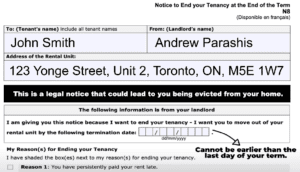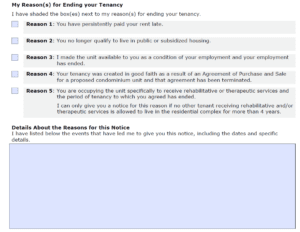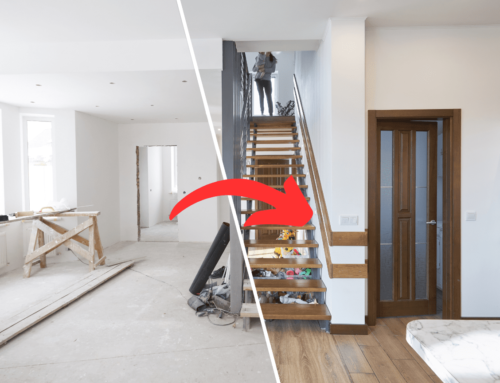For our audio-visual learners, here’s a 5-minute video on How to Serve an N8 form in Ontario.
Table of Contents
How to Serve an N8 LTB Form: Addressing Persistent Late Rent Payments
Hello everyone, Property Hustlers here. Today, we’re going into the specifics of the N8 form. This form is used by landlords to evict or end a tenancy at the end of a rental term. The most frequent scenario it’s used in, particularly relevant to many landlords, is persistent late payment of rent.
Download the form here: N8 Form LTB Ontario
Understanding “Persistence” in Late Rent Payments
The term “persistent” can be a bit ambiguous, but it’s crucial in determining when the N8 form can be utilized. Persistence indicates a repeated pattern of behavior – in this case, late payments – that significantly impacts the tenancy. However, how significant these late payments are can vary, and often, it’s up to an adjudicator’s discretion.
For instance, in a 2016 case, an adjudicator noted that a few months of late payments in a decade-long tenancy were not considered persistent. Conversely, four consecutive late payments in a two-year tenancy were enough to warrant action, leading to an order for the tenant to comply with timely rent payments.
Applying the N8 Form
If you believe persistent late payments are an issue in your tenancy, here’s how to effectively use the N8 form:
Filling Out the Form
Include your name, the tenant’s name, and all pertinent information as it appears on the lease and their government ID.
In the termination section, ensure that the end date is no earlier than the last day of the lease term. For month-to-month tenants, it should align with the end of a rental period.

Presenting Your Case
Choose reason number one on the form, which is for persistent late rent payments.
Detail any efforts you’ve made to resolve the issue, including significant dates and events leading up to serving the notice.
At the Landlord and Tenant Board (LTB) hearing, these details will be crucial in demonstrating your attempts to mediate the situation.

What to Expect at the LTB
It’s important to manage expectations when taking matters to the LTB, especially if it’s your first time. Typically, the board may enforce a payment plan rather than grant an immediate eviction. If the tenant continues to default, you can then reapply for an eviction order.
Remember, while the process may seem straightforward, outcomes can vary significantly as they are subject to the adjudicator’s discretion. You will eventually receive a hearing date after serving the N8 and filing with the LTB. If the adjudicator rules in your favor, the tenant will be ordered to pay rent on time, or you may proceed with an eviction through the sheriff’s office.
Final Thoughts on the N8 Form Process
In conclusion, the process of using an N8 form should be straightforward.
Once you have served the N8 form correctly, you can immediately file with the Landlord and Tenant Board using an L2 form and a filing fee of $201. Remember, it is crucial not to apply to the board more than 30 days after the final termination date specified in the N8. Once your application is processed, you will be assigned a hearing date to present your case.
If the adjudicator finds your case compelling, they will likely mandate that the tenant pay their rent punctually. Failure by the tenant to adhere to this order allows you to apply for an eviction.
Following this, the process involves taking the adjudicator’s order to the sheriff’s office to schedule the eviction.
Download the form here: N8 Form LTB Ontario
Start Your Investing Journey
Are you interested in real estate investing? Are you struggling with the high barriers to entry to the Canadian real estate market? Join us now and see how we can help you acquire your first US real estate deal in the next 45 days!
Fill out the application form below and take the first step towards expanding your investment portfolio across the border.




